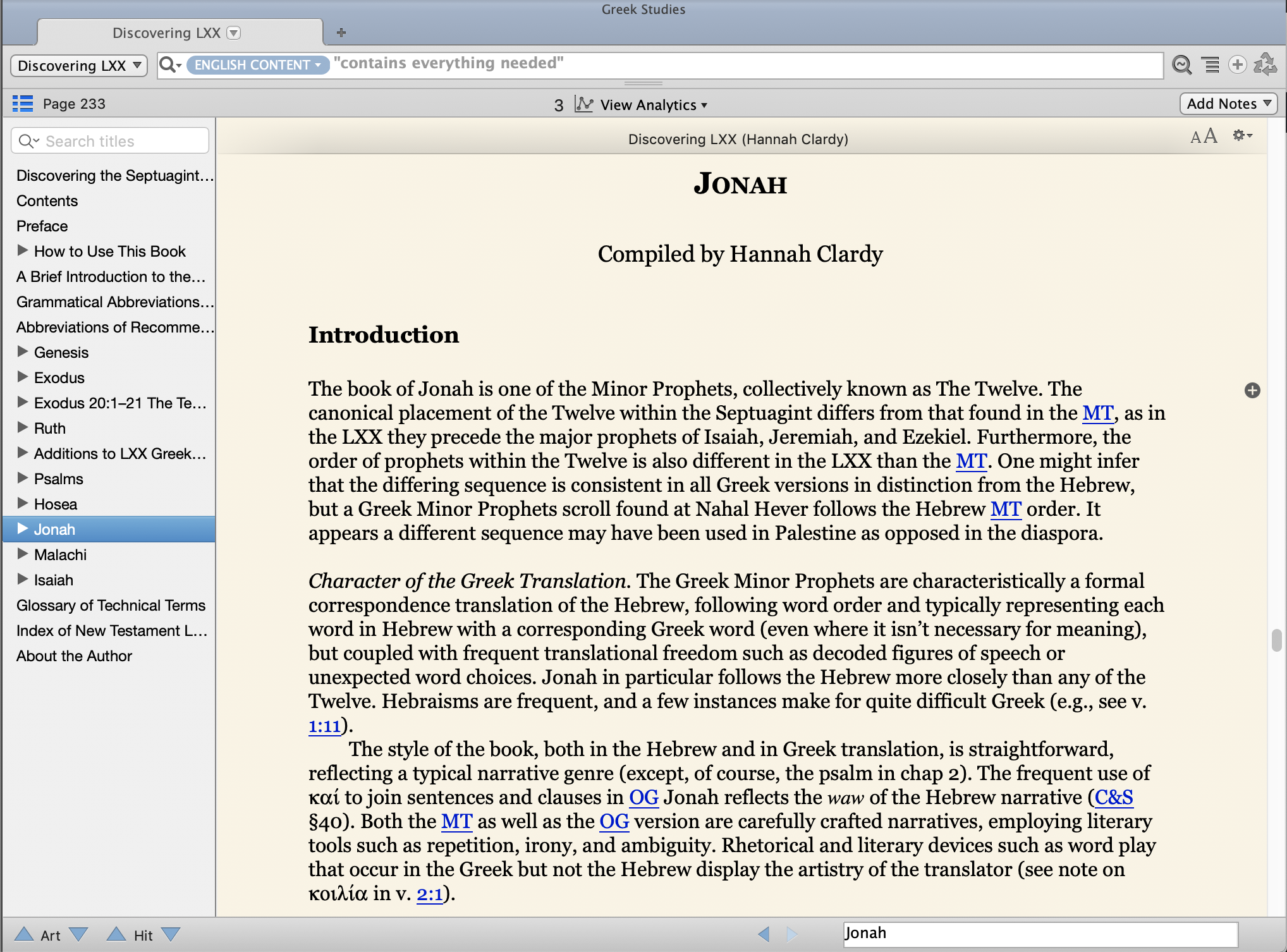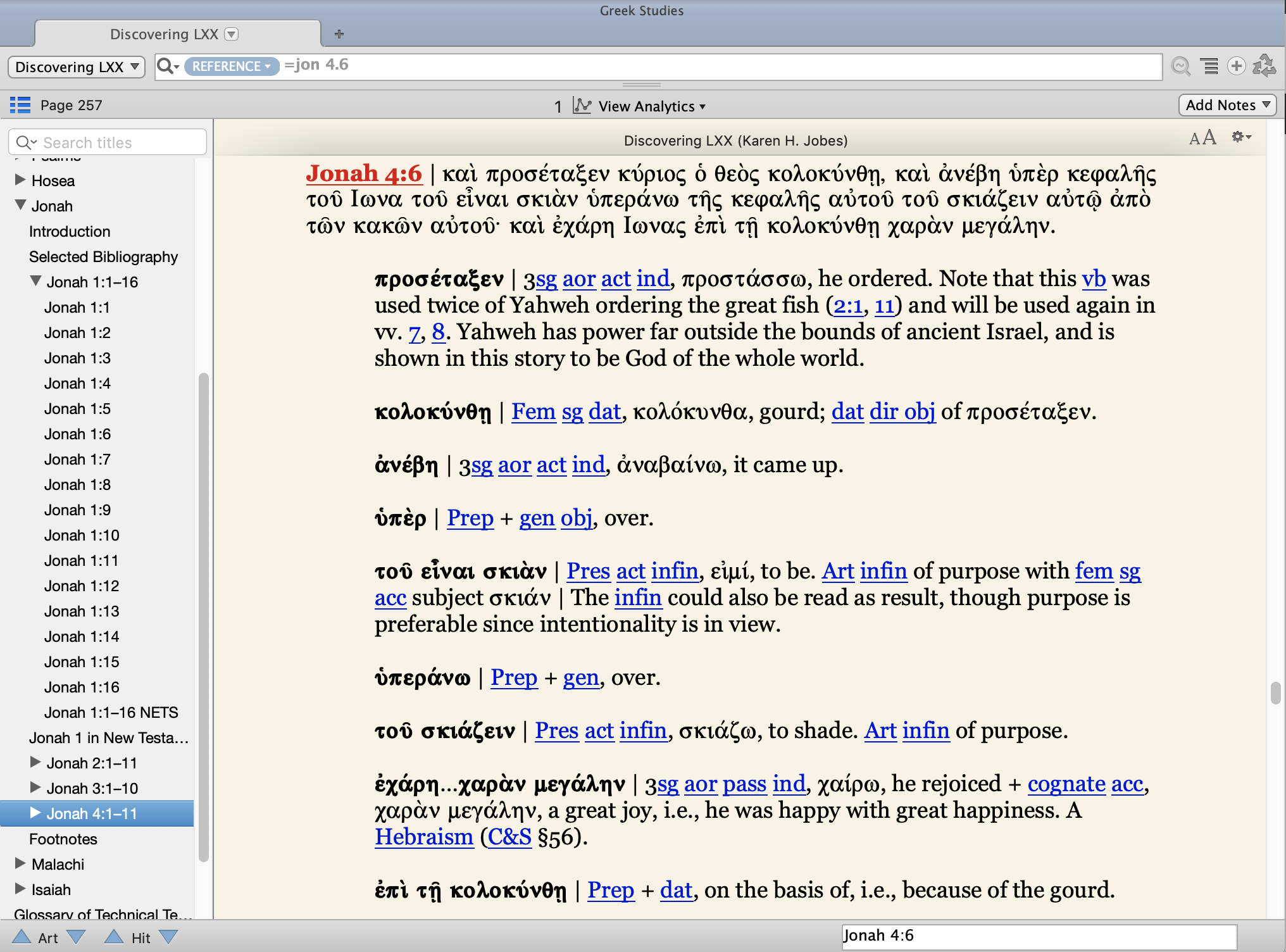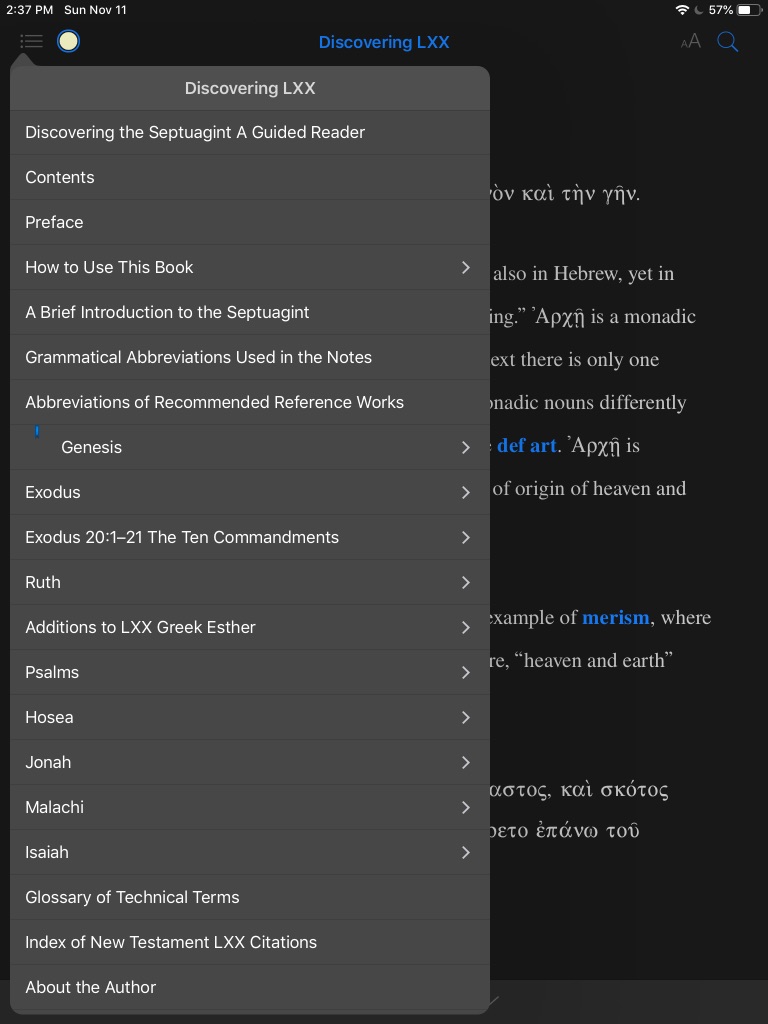Introduction
Takamitsu Muraoka’s work is a gift to all who would read the Greek translation of the Hebrew Bible.
When I first began to love reading the Septuagint, T. Muraoka’s Two-Way Index was my most valued resource. I reviewed it here.
So of course it has been with great interest and appreciation that I’ve used his “fully fledged lexicon” (X) of the Septuagint, titled A Greek-English Lexicon of the Septuagint (GELS). I review it here, with gratitude to Peeters for sending the review copy, with no expectation as to the content of my review.
The Approach of This Lexicon
First a word about the book itself: the binding is sewn and the cover is cloth. It is built to last. There could be no shoddy construction for a work of this magnitude and price, but even the publisher Brill sells multi-hundred-dollar books with glued bindings.
Why GELS?
The importance of the Septuagint does not lie merely in its value for historians of Early Judaism, but also in the fact that it embodies quite a sizeable amount of texts witnessing to Hellenistic, Koine Greek. Some of the current lexica such as Liddell, Scott and Jones, and Bauer do make fairly frequent references to the Septuagint, but their treatment, by universal agreement, leaves much to be desired. Furthermore, the last several decades have witnessed remarkable revived interests in the Septuagint, not only on the part of scholars interested in the history of the text of the Hebrew Bible, but also those who study the Septuagint as a Greek text with its own interests and perspectives, not necessarily as a translated text. (VII)
Consider the reader of an English translation of the New Testament. They may not know the original languages. If they don’t, they’ll be reading in translation, thinking of the text as it is in front of them. The one reading only in translation reads the text-as-received, not necessarily with an interest in the translation and production of the text. In the same way, I enjoy reading Bonhoeffer but know barely any German. I read him in English translation and except for the occasional footnote, don’t really consider the German or the particular decisions the translators made.
Here, then, is how Muraoka approaches the LXX:
Following a series of exploratory studies and debates, we have come to the conclusion that we had best read the Septuagint as a Greek document and try to find out what sense a reader in a period roughly 250 B.C. – 100 A.D. who was ignorant of Hebrew or Aramaic might have made of the translation, although we did compare the two texts all along. (VIII)
This is not, Muraoka is quick to note, the same approach as the so-called interlinear model of the New English Translation of the Septuagint (NETS). Besides, for more comparison between Greek and the Hebrew it translates there is the Two-Way Index.
How does Muraoka approach words and their definitions? Meaning is derived from how a word is used in its context: “Thus we started from the actual text, the whole text” (X). (This lexicon has evolved over time. He began with Obadiah and then the rest of the 12 prophets, to be exact.) Here it is worth quoting GELS at length:
A word is hardly ever used in isolation and on its own, but normally occurs in conjunction with another word or words. Such collocations help to establish the semantic ‘profile’ of the word concerned. Two words which are closely related may not wholly share their ‘partners,’ each thus gaining its individuality. Such information about collocations a given word enters provides important clues for defining its senses and determining its semantic ‘contours.’ It concerns questions such as what sorts of adjective a given noun is qualified by or what sorts of nouns or nominal entities a given verb takes as its grammatical subject or object. In addition to these semantic collocations, the question of syntactic collocations is equally important: which case (genitive, dative or accusative) and which preposition a given verb governs.
Different translations and lexicons may have their different approaches, but I appreciate how clear Muraoka is about his. I greatly value his approach. For those wondering, he uses Göttingen critical editions, where they are available, then Rahlfs, with “occasional use” of the Cambridge LXX.
The Structure of the Entries
Perhaps the two most welcome contributions of this lexicon are that:
(A) Muraoka provides definitions and not merely glosses or translation equivalents.
(B) Lexicon entries not only cite but also excerpt relevant LXX passages… even including an English translation of the quoted Greek. In this, Muraoka says, “we have decided to err on the generous side” (XI)—indeed.
There are 9,548 head-words—and I thought learning New Testament Greek was a challenge! Each entry has three primary sections:
- The headword (lexicon entry) in bold, followed by a “morphological inventory” so you can see the lexeme in other forms (this is great for language learning). There is also an asterisk that signifies a word “not attested earlier than the Septuagint” (XIII).
- The “main body” of the entry, “defining senses of the headword and describing its usage” (XIII). If there is “more than one distinct sense” of a headword, Muraoka marks them off by bold numerals.
- A surprising but helpful inclusion: “a word or group of words semantically associated with the headword” (XV). This is reminiscent of the Louw-Nida NT Greek lexicon, and a welcome addition. There are also references to secondary literature, when Muraoka deems them relevant to understanding the word.
Muraoka’s humility and sense of humor are here, too—qualities I might not have anticipated shining through in a lexicon. He says, “(?) is a symbol of despair, indicating our inability to establish any relationship of equivalence between the Greek word concerned and the supposed Hebrew original of the translator” (XVI).
Entries, Compared
Here is a comparison of entries between Muraoka’s GELS and Greek-English Lexicon of the Septuagint (“LEH”=Johan Lust, Erik Eynikel, and Katrin Hauspie). The word is μακάριος, the first word in the Psalms and in the Beatitudes in Matthew. One immediately begins to appreciate the depth which Muraoka treats a word.
LEH (via Accordance):
Muraoka:
I especially appreciate that Muraoka not only defines the word, but helps the lexicon user see how it is used:
With a limited number of exceptions (see below), μ. opens, as in the Beatitudes (Mt 5.3-10), a generic, typological statement in the form of a nominal clause without a copula with the fortunate character of the subject—a human, never a divinity—formulated by means of a relative clause or a participial clause….
While I appreciate Muraoka’s in-depth definitions, I wondered if he couldn’t have also included more translation equivalents as part of the entry. While the LEH entry is rather sparse, it gives the expected “happy” and “blessed” in its entry (though GELS does list “fortunate” right away as a translation equivalent). “Blessed” doesn’t come in Muraoka’s entry until further down, and only then as a translation of a Greek example. So too with φιλέω. LEH gives “to love” and “to kiss” right away in its few-line entry. Muraoka (whose entry is much more detailed) gives the first meaning as “to find agreeable, feel attracted to,” which is comparable to BDAG’s lengthy “to have a special interest in someone or someth., freq. with focus on close association, have affection for, like, consider someone a friend.” But if it’s often (and appropriately) translated “love,” why not indicate that earlier in the entry?
This may just be personal preference, and it would be unfair to evaluate Muraoka’s lexicon on something it doesn’t set out to do—namely, to provide translation equivalents at every turn. (He does say, “Occasionally, when we saw fit, we added a translation equivalent or equivalents….”)
So perhaps the best workflow is to consult Muraoka first to really understand a word, then go to LEH for a translation equivalent if needed. No one lexicon can do it all, and Muraoka really fills a large gap with his extended treatment of words.
Typographers, Shield Your Eyes?
Typographers, shield your eyes? Okay, maybe that’s an exaggeration. And may God bless and prosper biblical language typographers!
Still, for those looking closely, there is a bit of a distraction with how the font is vertically aligned in places, both in Greek and in English. See here:
In “and” and “unmarried,” the letters appear not to be totally flush with the baseline. The letters r and n and a seem to be the most frequent offenders. And there are issues with kerning (consistent spacing between letters):
Is this picky? Maybe. Could I do better? No way. I can’t imagine how hard it is to typeset a multi-language book like this. It is a little distracting, though, so I just try not to notice it.
Ordering Info
My only wish now is that Peeters would consider licensing this lexicon to Accordance Bible Software, where I would find it immensely useful. However, the bound edition is beautiful, and I do actually appreciate leafing through a print lexicon, just like I did in the olden days.
Any of the above critiques are far outweighed by the impressiveness of this lexicon. Kudos and thanks to Prof. Muraoka and others involved for producing such a fine resource.
And thanks again to Peeters for the review copy. Find the book here at their Website, and here via Amazon (affiliate link).
Expect, God willing, more Septuagint resource reviews in the weeks ahead.
























